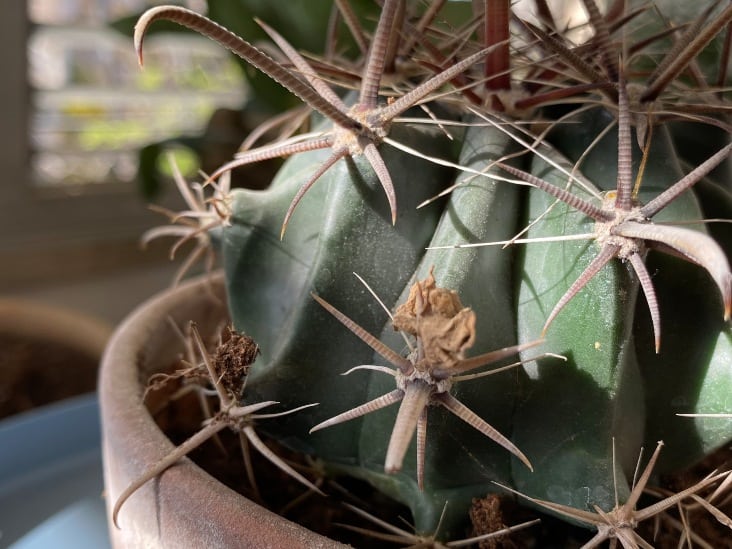Every prickly sentinel of your home, the cactus, stands tall with its vibrant greens and striking forms, embodying resilience in desolate landscapes. However, when the base of your cactus begins to turn brown, it signals a cry for attention, a whisper of discomfort that cannot be ignored. Just as the sturdy oak may bend under the unforgiving winds, so too can the cactus face challenges that jeopardize its vitality and aesthetic allure.
Understanding the intricacies of why your cactus is turning brown at its base involves delving into the multifaceted realms of care, environmental conditions, and biological responses. By navigating these factors, one can ensure the longevity and health of these remarkable plants. Let us explore the various culprits that could potentially be manipulating the color palette of your cactus.
The Battle Against Overwatering
One of the most common reasons for a cactus to exhibit signs of distress, such as browning at the base, is overwatering. The cactus, a desert dweller, is exquisitely adapted to thrive in arid conditions. When it is subjected to excessive moisture, particularly at the roots, it enters a state of chaos. This overindulgence in water encourages root rot, where the roots turn to mush, effectively choking the life out of the plant.
Imagine the roots of your cactus as a network of highways, carrying essential nutrients and water. When too much moisture saturates the soil, these highways become flooded. The roots suffocate, oxygen is diminished, and the vibrant green of the cactus’s exterior gives way to a melancholic brown at the base. This process can be insidious; initially, it may only appear as a minor blemish, but it can rapidly evolve into a pervasive problem.
To mitigate the risk of overwatering, utilize soil with excellent drainage capabilities and ensure pots have ample drainage holes. Water your cactus judiciously, allowing the soil to dry out completely between watering sessions. As a rule of thumb, during the growing season, a cactus usually requires watering every 2-3 weeks, while in the dormant winter months, this can be reduced to once a month or even less.
The Fight Against Fungal Infections
In the shadowy recesses of overly moist environments, fungi can mount a stealthy assault on a cactus. Different strains of fungi can invade the plant through wounded areas, leading to a condition known as fungal rot, which presents as brown lesions at the base. Fungicidal spores thrive where dampness prevails, and once they infiltrate your cactus, they can lead to systemic decline.
Unveiling Pest Intruders
In addition to the ravages of overwatering and fungal infections, pests can infiltrate your cactus sanctuary, wreaking havoc on its health. Mealybugs, scale, and spider mites are notorious adversaries, often drawing sap from the cactus, leading to a decline in vigor. These pests are microscopic marauders, camouflaging in the crevices where cacti flourishes.
Just as a storm can appear suddenly on the horizon, pest infestations can develop with alarming speed. Detecting their presence often involves scanning for webbing, sticky residue, or a general decline in plant health. If discovered, remove the pests using a cotton swab dipped in alcohol or by washing the plant with a gentle stream of water. Moreover, introducing natural predators can help maintain ecological balance; consider ladybugs, which voraciously consume aphids and other unwanted guests.
Environmental Factors: The Will of Nature
The environment in which a cactus resides plays an integral role in determining its health. Sudden shifts in temperature, prolonged exposure to extreme cold, or insufficient sunlight can all contribute to browning at the base. Cacti are equipped to handle heat, but they are sensitive to radical weather changes. A frigid gale or a stifling heat wave can inflict discomfort, prompting physiological responses that manifest as discoloration.
Fostering a stable habitat for your cactus is paramount. It’s important to position your specimen in an area that captures abundant sunlight while shielding it from harsh drafts and extreme weather changes. Understanding its natural habitat can offer insight into creating a nurturing environment that aligns with its intrinsic needs.
Conclusion: A Resilient Call to Action
As an emblem of perseverance and an enduring symbol of nature’s beauty, the cactus demands respect and attentiveness. Browning at the base is not merely an aesthetic concern—it is a herald that indicates a deeper problem requiring rectification. Whether the culprit is overwatering, pests, or environmental changes, understanding these challenges is the first step toward ensuring your cactus flourishes in its full glory.
By evaluating your care practices, providing solutions, and formulating a nurturing environment, you can transform your cactus from a flagging performer back into a striking centerpiece of desert elegance in your home. Each healthy bloom and vibrant hue of your cactus is a testament to your unwavering dedication to preserving its unique allure amidst the arid beauty of the plant kingdom.





Leave a Comment